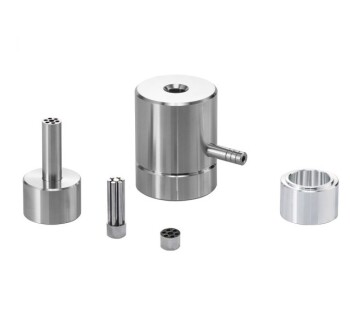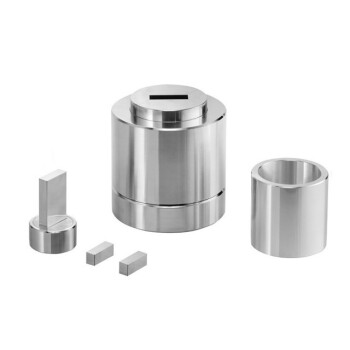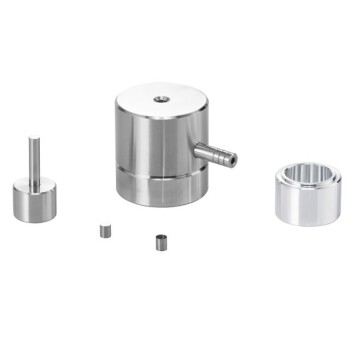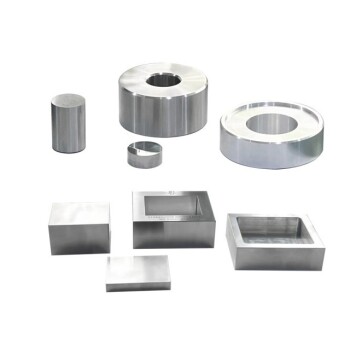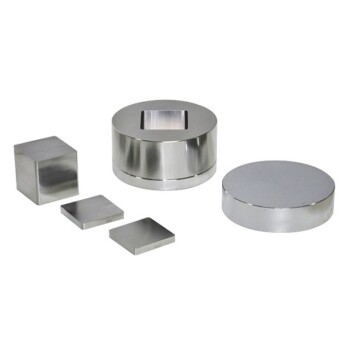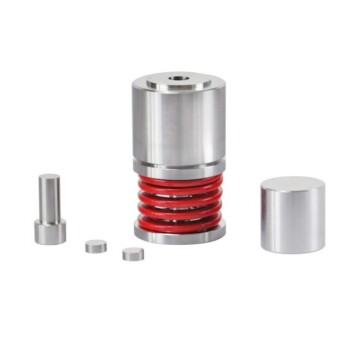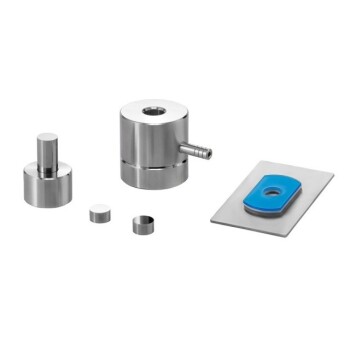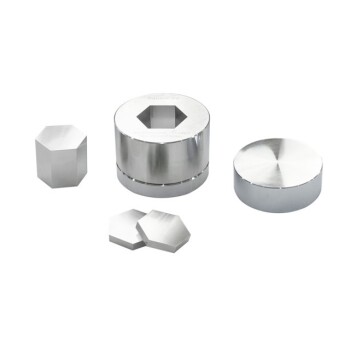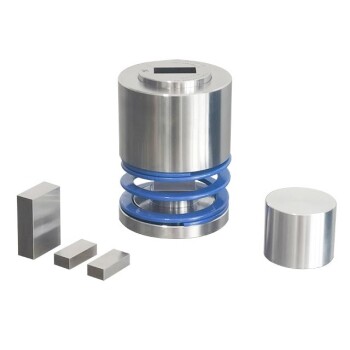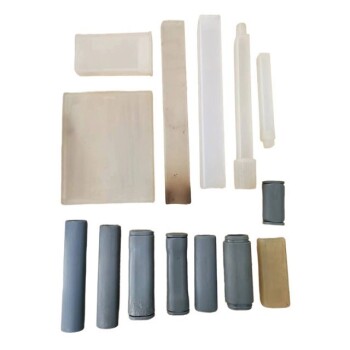In a rubber laboratory press, the pressing plates are manufactured from a high-strength tool steel known as SKD chromium-molybdenum alloy. This core material is then subjected to a series of advanced surface treatments—including carburizing, high-frequency hardening, chromium plating, and precision polishing—to create an exceptionally durable and flawless surface. The final product achieves a hardness of up to 60 HRC, ensuring it can withstand the extreme conditions of rubber molding.
The material choice for a pressing plate is not just about the base alloy. It is a multi-layered engineering solution designed to deliver three critical functions: structural integrity under immense pressure, thermal stability, and a perfect surface finish that resists wear and corrosion over thousands of cycles.
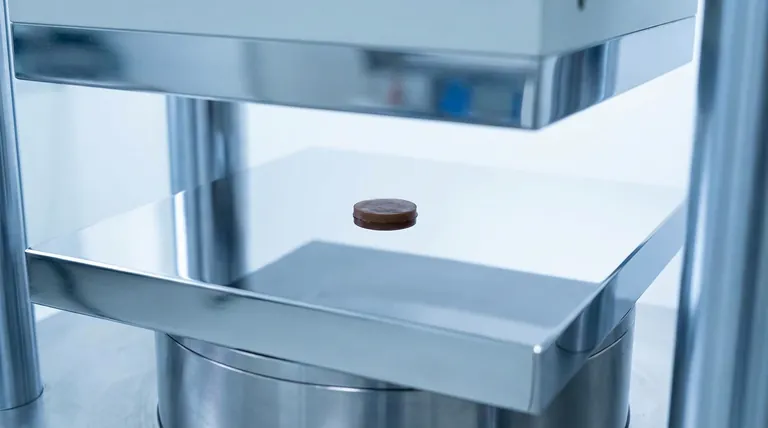
The Anatomy of a High-Performance Pressing Plate
A pressing plate, often called a platen, is the heart of the laboratory press. Its material composition is directly responsible for the accuracy and repeatability of your results. Each component of its design serves a specific, critical purpose.
The Core Material: SKD Chromium-Molybdenum Alloy
The foundation of the plate is SKD alloy tool steel. This is a Japanese Industrial Standard (JIS) designation for a type of steel known for its high strength, toughness, and excellent resistance to deformation at elevated temperatures.
This alloy is chosen because it provides the necessary structural backbone, preventing the plate from bending or warping under the high pressures and temperatures required for curing rubber.
The Surface Hardening Process: Carburizing
To create an exceptionally hard outer layer, the plates undergo carburizing. This is a heat treatment process where carbon is diffused into the surface of the steel.
The result is a "case-hardened" plate with a tough, resilient core and an extremely hard, wear-resistant exterior shell. This prevents the surface from denting, scratching, or marring, which would otherwise transfer imperfections to your rubber samples.
The Protective Finish: Hard Chromium Plating
After hardening, the plates are coated with a layer of hard chromium. This plating serves two essential functions.
First, it adds another layer of hardness and further enhances wear resistance. Second, and just as important, it provides superior corrosion resistance, protecting the steel from moisture and chemical exposure. It also creates a low-friction surface that helps with mold release.
The Final Touch: Precision Polishing
The final step is polishing the chrome-plated surface to a mirror finish. This is not purely cosmetic.
A perfectly smooth, polished surface ensures uniform contact and heat transfer to the rubber material. It is critical for producing samples with a flawless finish and for guaranteeing consistent, repeatable test results.
Understanding the Trade-offs
While the combination of SKD alloy and multiple surface treatments creates a superior platen, it's important to understand the associated trade-offs, which primarily revolve around cost and complexity.
Cost vs. Longevity
Plates built to this specification are significantly more expensive than those made from simpler materials like standard carbon steel. The multi-step manufacturing process requires specialized equipment and expertise.
However, this initial investment pays for itself in longevity and reliability. A cheaper plate will quickly scratch, corrode, or warp, leading to inconsistent results, frequent maintenance, and eventual replacement.
Hardness vs. Brittleness
Extremely hard materials can sometimes be brittle. The engineering of these plates cleverly mitigates this risk.
The SKD alloy core remains tough and ductile, able to absorb the stress of high-pressure clamping without cracking. The case-hardened surface provides the necessary hardness to resist wear. This dual-property design delivers the best of both worlds: a durable surface on a resilient foundation.
How to Apply This to Your Lab
Understanding the platen materials empowers you to evaluate equipment and diagnose issues more effectively.
- If your primary focus is research and development: A plate specified with SKD alloy, chromium plating, and a high HRC is non-negotiable for achieving the accuracy and repeatability your work demands.
- If your primary focus is quality control: The durability of these high-specification plates ensures minimal downtime and consistent sample quality, reducing process variability.
- If you are evaluating a new press: Ask the manufacturer for the platen material specifications. The presence of terms like "SKD tool steel," "hard chrome," and a hardness rating near 60 HRC are clear indicators of a high-quality, professional-grade machine.
Ultimately, the sophisticated material science of the pressing plates is fundamental to generating reliable and trustworthy data in your laboratory.
Summary Table:
| Component / Process | Key Features | Benefits |
|---|---|---|
| Core Material (SKD Alloy) | High strength, toughness, heat resistance | Prevents warping, ensures structural integrity |
| Surface Hardening (Carburizing) | Case-hardened exterior | Enhances wear resistance, prevents surface damage |
| Protective Finish (Chromium Plating) | Hard, corrosion-resistant layer | Improves durability, mold release, and chemical resistance |
| Final Polish | Mirror-smooth finish | Ensures uniform heat transfer and flawless sample surfaces |
| Overall Hardness | Up to 60 HRC | Withstands extreme pressure and temperature cycles |
Upgrade your laboratory's precision and efficiency with KINTEK's advanced lab press machines! Whether you're in R&D or quality control, our automatic lab presses, isostatic presses, and heated lab presses feature high-performance pressing plates made from SKD chromium-molybdenum alloy with superior surface treatments. Experience enhanced durability, consistent results, and reduced downtime. Contact us today to discuss how our solutions can meet your specific lab needs and drive your success!
Visual Guide
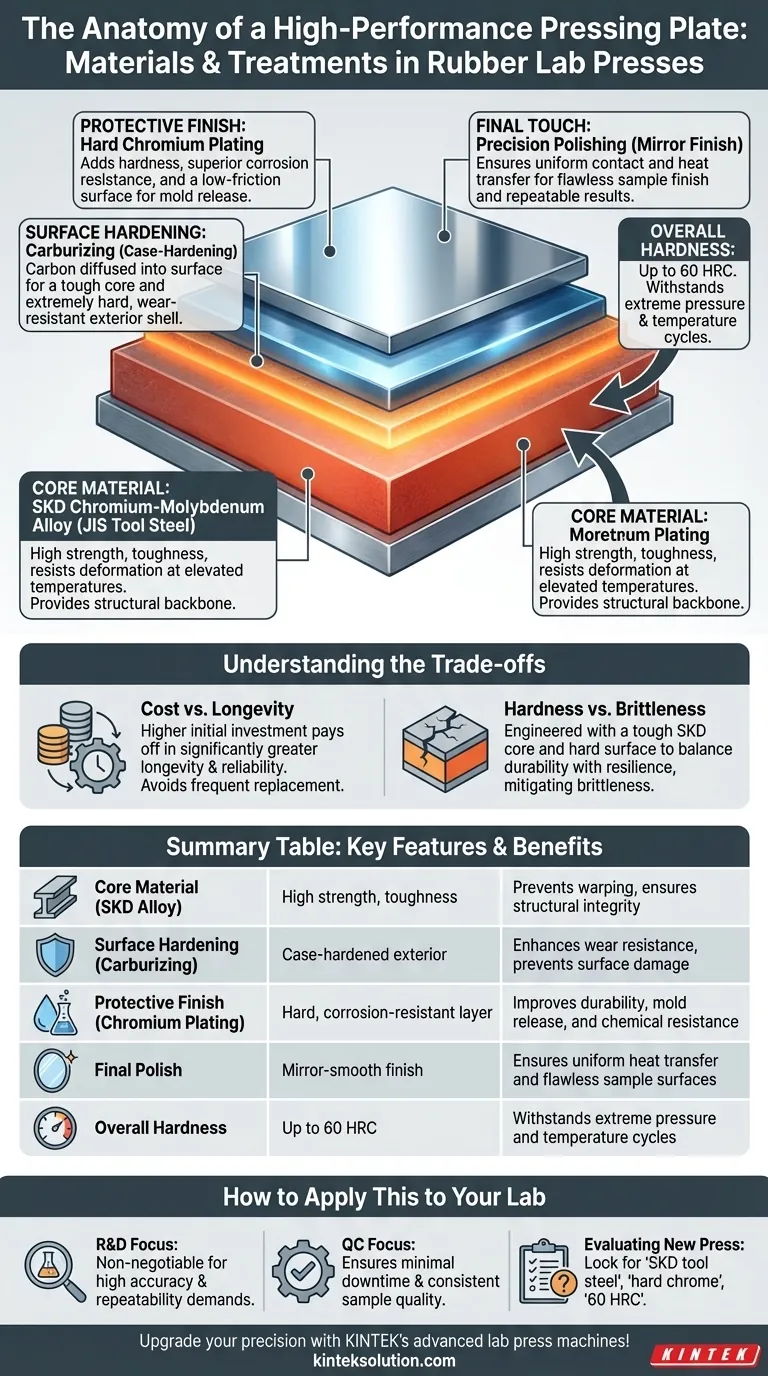
Related Products
- Special Shape Lab Press Mold for Laboratory Applications
- Laboratory Hydraulic Press 2T Lab Pellet Press for KBR FTIR
- Assemble Square Lab Press Mold for Laboratory Use
- Lab Cylindrical Press Mold for Laboratory Use
- Lab Heat Press Special Mold
People Also Ask
- Why are PEEK dies and titanium punches chosen for pressing Li6PS5Cl electrolyte pellets? Optimize Solid-State Battery Research
- What is the function of a PEEK die when pressing Na3PS4? Achieve Contamination-Free, In-Situ Testing for Sulfide Electrolytes
- What is the function of a PTFE die when pressing Li7P3S11 electrolyte pellets? Ensure Purity and Integrity for Your Solid-State Battery Research
- What additional equipment modules are available for these presses? Enhance Your Lab Press with Custom Moulds and Cranes
- Why must a lab press die's side wall be non-conductive for resistivity testing? To Ensure Accurate Current Path Isolation
